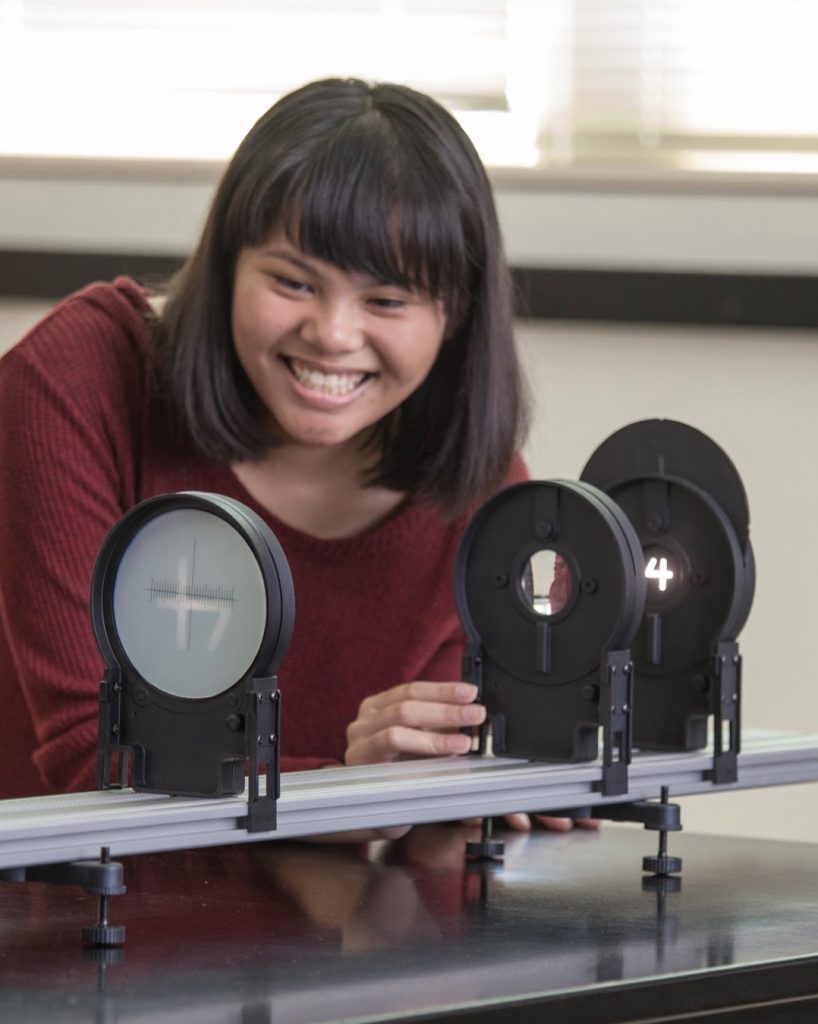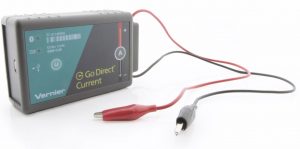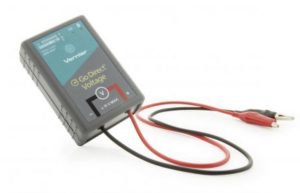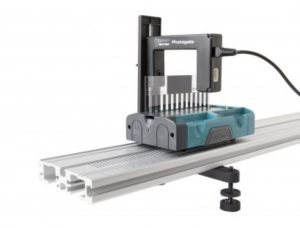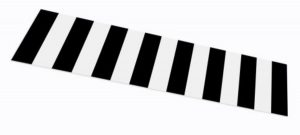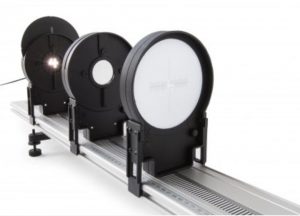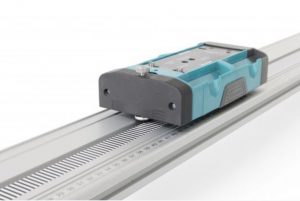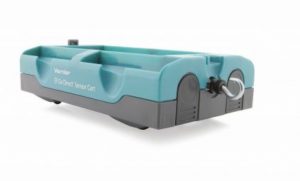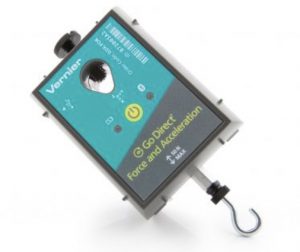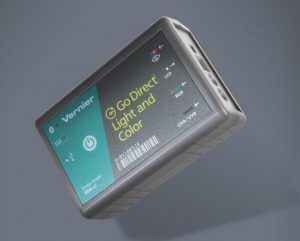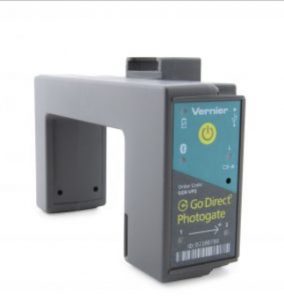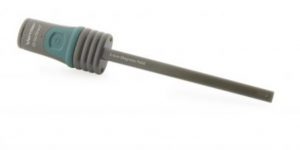Physics Kit with Vernier
Implement a physics lab with data collection.
Physics Kit with Vernier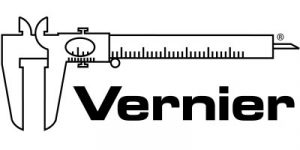
Vernier can be connected directly via Bluetooth or USB to computers, tablets, smartphones, chromebooks, Labquest interfaces, and more. They are designed by educators for educators and have a 5-year guarantee.
This kit includes:
GDX-LC Vernier Light and Color Sensor
The Go Direct Light and Color Sensor combines the power of multiple sensors to measure light intensity in the visible range and UV portions of the electromagnetic spectrum.
- Visible light sensor
- The fast sampling rate for the visible light sensor (1000 Hz) allows you to observe the flicker of fluorescent lamps.
- Red, green, blue (RGB) color sensor
- Use the RGB sensor to determine the relative contribution of red, green, and blue light. A built-in white LED provides uniform illumination when the sensor is placed directly above a surface, reducing the effect of variable ambient light.
- UV sensor
- Ideal for experiments using sunlight and UV lamps, the UV sensor responds well to ultraviolet radiation in the UVA and UVB spectrum.
- Experiment Ideas
The Go Direct Light and Color Sensor can be used in a variety of experiments:
- Explore light intensity as a function of distance.
- Conduct polarized filter studies.
- Observe the flicker of fluorescent lamps.
- Perform reflectivity studies, including color analysis.
Force and Acceleration Sensor
The Go Direct Force and Acceleration Sensor includes a force sensor, 3-axis accelerometer, and 3-axis gyroscope. Take it on a roller coaster, swing, or slide. Suspend several Go Direct Force and Acceleration Sensors from the ceiling to perform a 3-D vector force experiment, or attach a string to the hook and whirl it in a horizontal or vertical circle. In wireless mode, your imagination is the only limiting factor!
Go Direct Force and Acceleration can be used in a variety of experiments:
- Investigate Newton’s Third Law by connecting the hooks of two force sensors with a rubber band.
- Use the force sensor to pull an object across a surface to measure frictional forces.
- Attach the force sensor to the Centripetal Force Apparatus to measure centripetal force and acceleration simultaneously.
- Place sensors on Dynamics Carts to investigate forces and accelerations in collisions.
- Connect to Scratch 3 and enhance your activity with sensor input to control your sprite.
Sensor Cart

Our Go Direct Sensor Cart gives students a great way to explore force, position, velocity, and acceleration. It directly connects to your platform via Bluetooth® wireless technology—no wires or additional equipment required. Each cart features built-in sensors to simplify experiment setup and allow investigations to be conducted on or off the track.
Go Direct Sensor Cart can be used for hands-on kinematics and dynamics demonstrations but can also be used as an individual sensor. Hang a mass and spring from the force sensor to study simple harmonic motion, or attach the cart to a turntable to study centripetal acceleration.
Each full-featured dynamics cart includes
- Encoder wheel to report position
- 3-axis accelerometer to measure independent acceleration
- ±50 N force sensor to measure push and pulls
- Mass trays for changing total mass
- Plunger for collision and impulse studies
- Low friction wheels for uniform motion
The Go Direct Sensor Cart can be used in a variety of experiments:
- Collect position, velocity, and acceleration data as a cart rolls freely up and down an incline.
- Observe collisions between two carts, test for the conservation of momentum, or measure energy changes during different types of collisions.
- Investigate the relationship between force, mass, and acceleration.
- Examine the energies involved in simple harmonic motion.
- Measure a cart’s momentum change and compare it to the impulse it receives.
Dynamic track
The dynamic track and optical bench combination is made of aluminum and includes a metric scale. Extremely rigid, this 1.2 meter track will not sag in use. The track includes 2 levelers with two adjustable feet.
OEK Optical System
The optical expansion kit parts snap onto the track, so the parts can be left in place while the track is being moved. The three lenses are permanently mounted on three plastic mounts. The light source is LED based, so it uses less energy and is cool to the touch. A rotating disk on the light source gives you the choice of a radiating object, a point source, an “L” with a dimension of 2 by 1 cm, and parallel lines for resolution experiments. The power supply is the same as the LabQuest power supply. An additional aperture plate is included for experiments based on lens diameter and shape.
Sound Sensor

Collect sound data wirelessly with the snap of your fingers. With sound-triggered data collection, Go Direct® Sound provides students with an easy way to capture and evaluate waveforms. Measure wave amplitude and sound intensity level at the same time to investigate the decibel scale, or take the sensor outside the classroom to discover sounds in their natural environment.
- Response: A- or C-weighted
- Range: 55–110 dB
- Accuracy: ±3 dB
- Resolution: 0.1 dB
- Sound Level Frequency Range: 30–10,000 Hz
- Microphone Level Frequency Range: 100 Hz to 15 kHz
- Typical Max Frequency: 10,000 Hz
- Connections
- Wireless: Bluetooth
- Wired: USB
Photogate
Using Go Direct Photogate, students are able to easily and accurately measure velocity and acceleration to study the movement of an object in free fall, rolling objects, collisions, and pendulums, without needing to know anything about the geometry of the object.
Go Direct Photogate also includes a single laser gate for use with objects passing outside of the arms of the sensor. Using the laser gate requires a visible-light pen laser (not included).
Go Direct Photogate can be used in a variety of experiments:
- Measuring acceleration of a cart on an incline using a cart picket fence
- Measuring the angular motion of a wheel as it is turning
- Investigating Newton’s second law using a half-Atwood machine to measure acceleration
- Determining the time an object passes one or more gates
Picket Fence
The picket fences have eight opaque bars spaced every 5 cm, screen printed directly onto clear plastic. Drop the fence through a photogate to get records of position, velocity, and acceleration versus time or to measure g.
Picket Fence for cart PF-CART
It is a small plastic strip to synchronize the movement of the photogate with dynamic cars. When the cart’s picket fence passes through a photo gate, the velocity and acceleration of the cart as a function of time can be measured with.
3-Axis Magnetic Field Sensor
The Go Direct 3-Axis Magnetic Field Sensor measures the components of the magnetic field along three orthogonal axes. This allows you to determine the magnitude and direction of the magnetic field at any point in space. If desired, measure the field along only two axes, or even one axis, choosing the direction that is best for the experiment.
The Go Direct 3-Axis Magnetic Field Sensor can be used in a variety of experiments:
- Quantify the magnetic field strength of induced magnets.
- Determine the declination and inclination of the Earth’s magnetic field at your location using vector components.
- Investigate the relationship between magnetic field strength, coils per unit length, and current in the center of a solenoid.
Voltage Probe
The Go Direct Voltage Probe combines a wide input voltage range and high precision, making it an excellent choice for lab investigations of both AC/DC circuits and electromagnetism. Use this differential probe to measure the voltage in simple circuits, to study basic principles of electrochemical cells, or to investigate the resistivity of different metals.
With a range of ±15 V, this system is ideal for use in “battery and bulb” circuits. Go Direct Voltage is capable of kHz sampling and mV resolution, so you can also use it to capture more difficult electric potentials, such as the electromagnetic field induced in a coil by a moving magnet. This single sensor can take the place of several voltmeters in your classroom.
The Go Direct Voltage Probe can be used in a variety of experiments:
- Measure potential difference at various places in series and parallel circuits.
- Investigate Ohm’s law in simple circuits.
- Measure the voltage across a capacitor in RC and RLC circuits.
- Explore Faraday’s law and induced EMFs in a coil of wire.
Current Probe
Simplify your experimental setup with the Go Direct Current Probe. It connects wirelessly via Bluetooth® or wired via USB to your device. The wireless connection eliminates additional cables that can clutter the lab bench.
- Capture small currents like those produced by a magnet falling through a coil.
- Use in combination with the Go Direct Voltage Probe to investigate Ohm’s law or series and parallel circuits.
- Explore RC and RLC circuits.
Physics Kit with Vernier
Vernier Physics Kit Skills
+ Formulate questions and problems on scientific topics of interest, based on the observation of phenomena and/or the exploration of various sources.
+Plan and develop investigations that allow collecting evidence and contrasting hypotheses, with the support of technological and mathematical tools.
Analyze and interpret data
+ Describe patterns, trends, and relationships between data, information, and variables.
+ Analyze the relationships between the parts of a system in phenomena and problems of interest, from tables, graphs, diagrams and models.
Build explanations and design solutions
+ Construct, use and communicate scientific arguments.
+ Develop and use evidence-based models to predict and explain mechanisms and
natural phenomena.
+ Design projects to find solutions to problems, using imagination and
creativity.
Evaluate
+ Evaluate the validity of information from various sources, distinguishing between scientific evidence and interpretation, and analyze its scope and limitations.
+ Critically analyze social, economic, ethical and environmental implications of problems related to public controversies involving science and technology.
Learning Objectives for Vernier Physics Kit:
Analyze the movement of bodies under the action of a central force in various everyday situations or natural phenomena, based on concepts and models of classical mechanics.
Evaluate the contribution of modern physics and its structuring theories (such as relativity and quantum mechanics) to the debate on the nature of reality, as well as its impact on society, technology and natural systems.
Investigate and apply knowledge of physics (such as fluid mechanics, electromagnetism, and thermodynamics) to understand phenomena and processes that occur in natural systems, such as the oceans, Earth's interior, atmosphere, freshwater, and soils .
